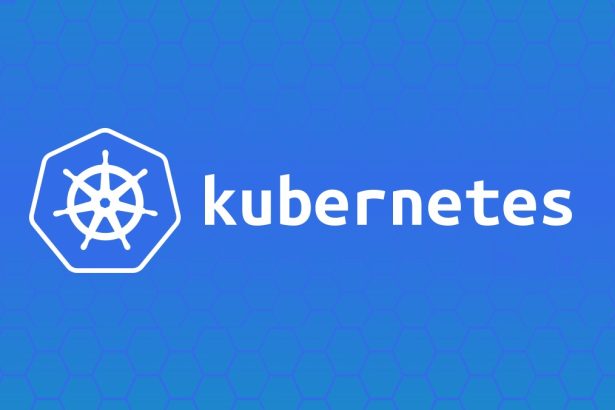Spring Data JPA simplifies working with relational databases in Java applications. It eliminates boilerplate code, making database access straightforward, efficient, and customizable for developers. As applications in 2025 become more reliant on robust back-end relational data solutions, mastering Spring Data JPA becomes a critical skill. By leveraging its features, developers can interact seamlessly with their databases using well-defined repositories, custom query methods, and dynamic paging and sorting capabilities.
This crash course provides a beginner-friendly overview of Spring Data JPA, focusing on its key features—Repositories, Query Methods, and Paging/Sorting. Whether you’re new to Spring Boot or looking to sharpen your database management skills, this guide has you covered.
Table of Contents
1. What is Spring Data JPA and Why is It Important?
Spring Data JPA is part of the Spring Framework and serves as a powerful abstraction over Java Persistence API (JPA). It simplifies the implementation of data access layers by reducing boilerplate code and streamlining CRUD operations. With Spring Data JPA, developers no longer need to write complex SQL queries or manage connections manually.
Why Use Spring Data JPA in 2025?
- Seamless Integration: Works flawlessly with relational databases like MySQL, PostgreSQL, Oracle, etc.
- Productivity Boost: Built-in support for CRUD and query methods reduces development time.
- Dynamic Capabilities: Supports pagination, sorting, and other operations out of the box.
- Scalability: Ideal for both small and large-scale enterprise applications.
Spring Data JPA forms the backbone of modern Java applications, enabling developers to focus on business logic instead of database intricacies.
2. Working with Repositories in Spring Data JPA
Repositories in Spring Data JPA handle the interaction between the application and the database. They simplify performing CRUD (Create, Read, Update, Delete) operations without the need for explicit SQL queries.
Creating Repositories
Spring Data JPA provides several repository interfaces. Most commonly, you’ll use CrudRepository, JpaRepository, or PagingAndSortingRepository based on your specific use case.
Example Repository Declaration:
@Repository
public interface UserRepository extends JpaRepository<User, Long> {
}
Here:
- User: The entity for which this repository interacts.
- Long: The type of the primary key.
The JpaRepository interface includes advanced features like pagination and batch operations.
Defining CRUD Operations
The repository interface implicitly comes with a suite of CRUD methods:
- save() – Insert or update records.
- findById() – Retrieve a record by its ID.
- findAll() – Fetch all records.
- delete() – Remove specific records.
Example:
@Autowired
private UserRepository userRepository;
// Create a user
User user = new User("Jane Doe", "janedoe@example.com");
userRepository.save(user);
// Retrieve all users
List<User> users = userRepository.findAll();
3. Using Query Methods in Spring Data JPA
Query Methods allow custom database queries without writing SQL. Methods are dynamically derived based on naming conventions applied to method names.
Predefined Query Methods
Spring Data JPA enables methods like findBy, countBy, and deleteBy, followed by property names.
Example:
List<User> findByEmail(String email); List<User> findByLastNameAndAge(String lastName, int age);
These queries automatically translate into SQL:
SELECT * FROM users WHERE email = ?; SELECT * FROM users WHERE last_name = ? AND age = ?;
Custom Queries with @Query
For highly complex queries, you can use the @Query annotation to define JPQL or native SQL queries.
Example:
@Query("SELECT u FROM User u WHERE u.email = :email")
User findByCustomEmail(@Param("email") String email);
You can also define native queries like this:
@Query(value = "SELECT * FROM user_table u WHERE u.email = :email", nativeQuery = true)
User findByEmailNative(@Param("email") String email);
4. Implementing Paging and Sorting
For applications with extensive datasets, Spring Data JPA provides built-in pagination and sorting support.
Pagination Basics
Pagination splits large data into smaller, manageable chunks. Use the Pageable object to control page size and offsets.
Example:
Pageable pageable = PageRequest.of(0, 10); // First page, 10 records Page<User> userPage = userRepository.findAll(pageable); userPage.getContent(); // List of users userPage.getTotalPages(); // Total pages
Sorting Data Dynamically
Sorting can be easily combined with pagination:
Pageable pageable = PageRequest.of(0, 10, Sort.by("lastName").descending());
Page<User> userPage = userRepository.findAll(pageable);
You can also pass multiple sorting criteria by chaining fields:
Sort sort = Sort.by("lastName").descending().and(Sort.by("firstName").ascending());
List<User> sortedUsers = userRepository.findAll(sort);
5. Practical Code Examples
Setting Up an Entity
@Entity
public class User {
@Id
@GeneratedValue(strategy = GenerationType.IDENTITY)
private Long id;
private String firstName;
private String lastName;
private String email;
// Getters and Setters
}
Complete Repository with Custom Query
@Repository
public interface UserRepository extends JpaRepository<User, Long> {
List<User> findByLastName(String lastName);
@Query("SELECT u FROM User u WHERE u.firstName LIKE :prefix%")
List<User> findByFirstNamePrefix(@Param("prefix") String prefix);
}
Pagination Controller
@RestController
@RequestMapping("/users")
public class UserController {
@Autowired
private UserRepository userRepository;
@GetMapping
public Page<User> getUsers(@RequestParam int page, @RequestParam int size) {
return userRepository.findAll(PageRequest.of(page, size));
}
}
6. Tips for Mastering Spring Data JPA
- Understand JPA Basics: Ensure you’re comfortable with annotations like
@Entity,@OneToMany, and@ManyToOne. - Clean Query Design: Use derived query methods for simplicity and @Query annotation for complex logic.
- Optimize Pagination: Test pagination with large datasets to minimize memory and latency issues.
- Explore Advanced Features: Look into specifications and projections for enhanced querying capabilities.
7. FAQs About Spring Data JPA
1. Is Spring Data JPA suitable for large-scale applications?
Yes. It scales well and integrates seamlessly with modern databases and distributed systems.
2. What makes Spring Data JPA different from Hibernate?
Spring Data JPA is a layer on top of JPA (and Hibernate) that simplifies common tasks and provides additional functionality.
3. Can I use SQL with Spring Data JPA?
Yes, you can write native SQL queries using the @Query annotation.
Spring Data JPA provides developers with tools to interact efficiently with relational databases. Master the key features outlined here, and you’ll be equipped to build dynamic, scalable applications in 2025 and beyond!

